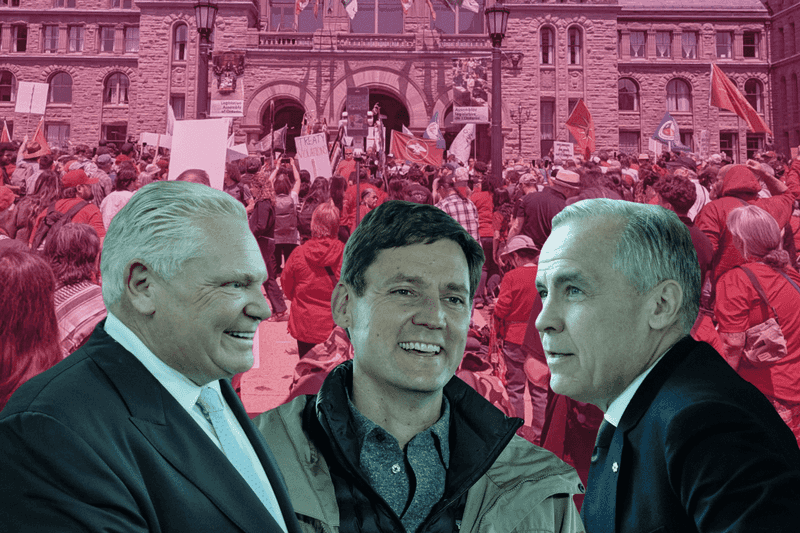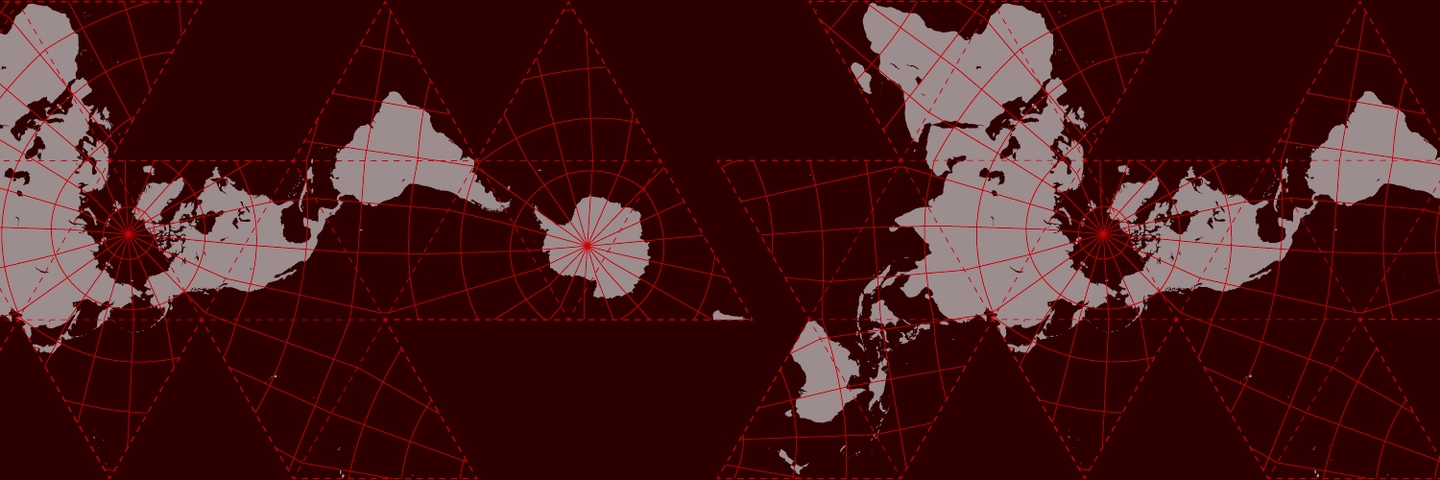
The countries promoting the NIEO were solidly anti-Marxist. Unlike Groucho Marx, they wanted to be a member of any club that might have them — specifically, the club of post-World War 2 developed, relatively sovereign nations using controlled domestic economies and particularly financial systems to promote faster industrialization and stable incomes for primary producers and workers more generally.
In essence, by promoting a new deal for recently decolonized nations and the mostly Latin American countries operating as informal dependencies under first the British and then the US empire, the NIEO group sought to generate a global equivalent of the US New Deal. The New Deal famously legitimized collective bargaining, stabilized agricultural production and prices while also subsidizing incomes, and funded a massive developmental upgrading of the US American internal periphery. In essence, the NIEO proponents sought to expand that post-war ‘fordist' regulated economy to a global scale, just as immigrant and racial minorities sought access to stable income and employment inside developed country labor markets. Those minorities wanted western democracies to live up to their promises of equality for all citizens; NIEO proponents wanted western democracies to live up to the unfulfilled promises of the 1944 Bretton Woods conference and post-colonial sovereign equality.
This was not a forlorn hope for three reasons. First, the NIEO was at some level economically rational. Second, the Bretton Woods architects had considered and approved proposals like those of the NIEO already, though they were never implemented. Third, in the specific conjuncture of the early 1970s, rich countries’ internal political struggle over how to cope with the contradictions of the post-war regulated economies was still unsettled, opening room for a set of global compromises mirroring the earlier ones in rich countries.
The rationality of the NIEO
The NIEO was economically rational for the same reasons the New Deal was economically rational. The continuous flow, assembly line-based mass production system that emerged in the US in the 1920s and 1930s required both stable demand and stable production to be profitable. Mass production systems were in principle extremely efficient and productive relative to craft production. But massive investment in specialized capital goods underwrote that productivity. And that massive investment could only be profitable if it ran more or less continuously at full capacity, so as to maximize economies of scale. The New Deal sought to create an institutional framework that would stabilize both demand and production.
Mass production required stability and predictability overall, as Aldous Huxley’s famous parody Brave New World emphasized. Continuous flow production can only work on the supply side if all required inputs arrive in the right quantities and quality, at the right time and the right place, to be assembled by workers with the right skills. One of the most important skills was tolerance for the extreme monotony and fast pace of assembly line work. Continuous flow production could only be profitable if that stable output more or less met stable purchasing power, and moreover purchasing power at a level that could accommodate the expense of what were in essence capital goods for households, like cars and refrigerators.
The New Deal accomplished much of this at a domestic level. Unions for a largely white, male industrial labor force in the US American northeast and northern Midwest stabilized wages, while routinized collective bargaining assured that wages grew in line with increased productivity. Stable, higher wages and an expanding welfare state enabled those workers to buy cars and houses on credit. Cars and houses were the motors of post-war growth. But virtually every economic sector was the object of stabilizing regulation including, most importantly, financial flows. The Agricultural Adjustment Act stabilized farm output and income, which helped transform agriculture into a more predictable industrial enterprise closely linked to the vehicle and chemical industries — Ford designed the Model T as a multi-purpose farm vehicle. Federal legislation and the Texas Railroad Commission stabilized oil prices and quantities domestically, while the seven biggest US and British oil firms regulated global production. And regulations and plethora of special credit facilities channeled predictable capital to farmers, electrical power utilities, municipalities, defense contractors, and most significantly, the housing market. Finally, the US government brought electricity to the US periphery with three massive public hydropower projects: TVA in the southeast, the Columbia River projects in the northwest, and the Colorado river projects — primarily the Hoover Dam — in the southwest.
The approval of the Bretton Woods architects
The impending Allied victory in World War 2 opened a space for the United States to export some or all of this system to the rest of the world, given US productive superiority. (Russians won the war with blood; US Americans with sweat; Britons with tears for their empire). The 1944 Bretton Woods conference saw 44 free and occupied nations, including delegations from some colonies promised post-war independence, try to design a stable international economic order under the new United Nations. The US and Britain dominated the talks, but various would-be industrializers like Canada, Australia and India — the last still a British colony, the first two only semi-sovereign, but all crucial for Britain’s war effort — added a strong developmentalist element to the debates.
Contrary to what might be expected, the Bretton Woods conference promulgated a quite comprehensive program of global economic regulation that resembled many of the elements of the US New Deal, and similar Depression- and war-era regulatory regimes. States were allowed to regulate global capital flows so as to be able to direct finance towards local development. An International Bank for Reconstruction and Development (i.e., World Bank) would bring financial capital — but physically, capital goods — to places short of capital. A separate institution, the International Monetary Fund (IMF), would help with short-term credit to stabilize exchange rates and thus permit continuous flows of imported and exported goods. A 1945-1947 conference promulgated an International Trade Organization (ITO) to regulate and stabilize the price of various raw materials, taking control away from global oil, mining, and plantation firms, and, crucially, expanding the proposed short-term lending of the IMF. Yet all of these institutions were crippled or strangled at birth. A Republican-dominated US congress refused to ratify the ITO agreement, and both the World Bank and IMF proved woefully under-resourced relative to their assigned tasks. The losers here — the world’s population still living under colonial governance — had other pressing matters, namely winning independence, to deal with. Meanwhile trade fell under the General Agreement on Trade and Tariffs, which excluded food, raw materials, services, and investment from its purview.

A global New Deal
The internal contradictions and political struggles of the New Deal system also played out internationally. By the time decolonization shifted the balance of voting power in the United Nations towards the G-77 bloc of what is now 132 developing countries, the domestic New Deal order in the US and Europe was breaking down, for the very same reasons that the newly independent countries wanted to pursue an NIEO. Post-war macroeconomic planning relied on three cheap resources: docile semi-skilled male labor, docile female compliance with housewifery, and docile ex-colonial suppliers of cheap raw materials, especially oil. Immigrants in Europe and the Black population of the US increasingly composed that semi-skilled workforce. All were excluded from the benefits theoretically available to citizens. Women similarly chafed against formal and informal participation as equals in the labor market. And, most obviously, ex-colonies wanted to take control of their exports away from foreign multinational firms, using expropriation and cartels. These three shocks — strikes, female labor market entry, and expropriation — made national regulation of the mass production economies untenable.
The question, then, was where to go? Oppressed groups were trying to rewrite the social contract in developed economies. The collapse of the Bretton Woods monetary order in 1971/1973 opened a space to rewrite the global social contract, paralleling unions’ demands for industrial democracy and feminist and minority groups’ demands for inclusion. The 1970s were thus a period of contestation over whether to abandon regulation at the domestic level, or shift it up to a more regulated and presumably stable global level. The NIEO offered a global version of the old domestic New Deal order, rebooting the ITO via a strengthened UN. Just as Black people and immigrants demanded civil rights, newly sovereign nations wanted a UN General Assembly based on equal representation to have real power to generate binding international law and thus enable global economic regulation. And just as the New Deal required a set of new laws diminishing employer power, so, too, the proposed NIEO economy required a legal framework weakening the power of multinational firms and developed economies.
Under the NIEO, state-organized cartels would determine prices and quantities of raw materials, stabilizing incomes for farmers and (mostly state-owned) extraction firms in developing countries, just as unions stabilized wages. Stable incomes in turn would permit those states or firms in their economies to borrow money from an international lending body to create local manufacturing serving new stabilized and enlarged local demand, much as Ford-sold Model Ts and tractors to US farmers. Just as the GI Bill enabled a once-only upgrading of US human capital, mandatory technology transfer would assure that these new manufacturing firms were competitive in world markets. All of this was fundamentally rights-based — the right of formally equal states to have the same kind of control over their economies that the big industrial economies possessed by virtue of size and power — and at the same time deeply pragmatic — stable incomes allow for stable investment, and thus balanced growth with demand and supply moving in sync. The latter was the critical factor in Western European economic catch-up with the United States after 1948.
The alternative was the economic volatility that plagued many pre-1948 rich countries. There, unregulated agricultural or raw materials production periodically overshot demand, leading to price collapses, falling rural income, debt default, and then financial crashes. Economic volatility and inequality unsurprisingly generated political volatility, as monopolies like railroads skimmed off economic rents from dispersed producers, provoking populist social movements.
Despite this track record, developed country elites squashed both domestic and global sources of disorder through violence, new laws, and targeted investment. Exporters of raw materials in developing countries had leverage because of shortages, and could exercise that leverage by expropriating foreign firms. So new raw materials investment thus flowed to ‘safe’ locations like Australia, Canada and the United States, none of which would expropriate or withhold production, just like multinational firms relocated labor-intensive production to low-wage, labor repressing Asian locations in order to weaken unions. The United States and European Union offered developing nations ‘take it or leave it’ investment and trade treaties that opened up local financial markets. And while the United States did line up with major agricultural exporters to try to reduce European Union agricultural subsidies and trade barriers, multinational firms were the main beneficiaries. Net, developing countries’ ability to regulate their economies disappeared. Instead, they were exposed to destabilizing financial flows that produced three decades of debt and foreign exchange crises.
The G77 developing countries tried to join the post-war development club at the same time that the club was disbanding — or, more precisely, changing the rules under which the club operated. The NIEO proposals would have created a global version of the successful, albeit far from ideal, post-war growth strategies of the developed world. In principle, this could have been a win-win outcome, with rich countries supplying capital goods and sophisticated consumer goods to a world market with stable and rising income, while their own domestic political economies avoided the politically destabilizing income inequality of the past two decades. Instead, a handful of G77 countries industrialized. In 2019, raw materials exports comprised more than 60 percent of total exports for two-thirds of developing economies — 102 countries — with most countries heavily dependent on three or fewer commodities. Oil aside, none of those commodities benefited from any price stabilization scheme. The club clubbed the NIEO.

Herman Mark Schwartz is Professor of Politics at the University of Virginia.



